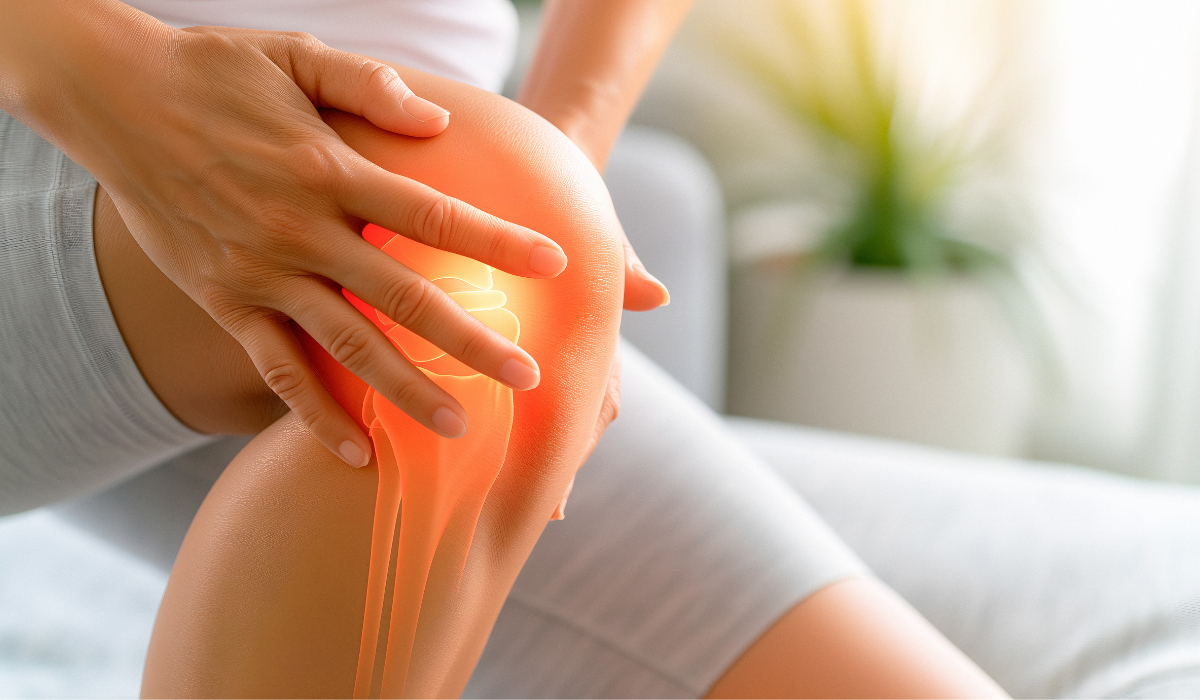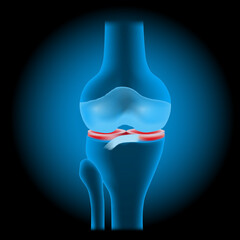We talk a lot about musculoskeletal conditions being invisible. With current treatments, most people diagnosed with a musculoskeletal condition will have no outward signs of their condition. However, someone living with these conditions can feel the pain and fatigue associated with them.
Osteoporosis is a different story. It really is invisible. There are no obvious signs when a person develops osteoporosis, and importantly, they don’t feel any different. Until they break a bone. Then it becomes obvious that something has happened.
So what is osteoporosis?
Osteoporosis is a condition that causes bones to become weak and lose their strength, making them break more easily than healthy bones. It’s more common in women, but men do get it too.
Another condition, osteopenia, is also associated with weak bones. A person with osteopenia has lower than average bone density but it’s not low enough to be diagnosed as osteoporosis.
Your bones
To understand how osteoporosis affects your bones, it’s helpful to know how they work.
Although we often think of them as dry and lifeless, bones are living tissue. They’re made of the protein collagen and are strengthened with the mineral calcium phosphate. They’re constantly changing throughout life. Specialised bone cells (osteoblasts) create new bone, while others (osteoclasts) break down and remove old bone. The rate at which this occurs changes as we age.
From birth to about 25 years of age, you build more bone than you lose. Your bones are not only getting bigger as you grow, but they’re also developing their density. This determines how strong they are.
From about 25 to 50, your bones break down and rebuild at about the same rate. Your bones are at their strongest.
After about 50 years of age, you break down more bone than you rebuild. While this means everyone will experience some bone loss as they age, it doesn’t mean everyone will develop osteoporosis.
Women commonly experience a period of rapid bone loss after menopause. This is due to a drop in oestrogen levels.
Causes of osteoporosis
Osteoporosis is caused by a loss of bone density. Many things can cause you to lose bone density; some you can change, and others you can’t.
Risk factors you can’t change:
- Family history of osteoporosis
- Being female
- Getting older
- Early menopause (before 45) which results in reduced levels of oestrogen
- Use of certain medicines, including long-term use of glucocorticoids (e.g. to treat rheumatoid arthritis or asthma), some chemotherapy drugs, epilepsy drugs, and proton pump inhibitors
- Other health conditions including rheumatoid arthritis, coeliac disease, inflammatory bowel diseases, and diabetes.
Risk factors you can change:
- Low levels of calcium in your diet
- Not getting enough vitamin D
- Being inactive or sedentary
- Excessive alcohol intake
- Smoking
- Being underweight
- Poor nutrition.
The International Osteoporosis Foundation has an online risk test you can use to check your risk factors. This isn’t a diagnostic tool, but it can help you understand your potential risks so you can discuss them with your doctor.
Symptoms of osteoporosis
For most people, there are no symptoms that you have osteoporosis. Bones becoming weaker has no visible signs until they become so weak that they break. This can cause pain from a fracture – for example, breaking the wrist or hip after a fall. If the bones in the spine (vertebra) have fractured or collapsed, it can cause back pain, loss of height and a stooped posture.
Diagnosing osteoporosis
If you’re concerned that you may have osteoporosis or be at risk of developing it, you should see your doctor.
Your doctor will assess your risk factors for developing osteoporosis and look at your medical history – including your family history.
Family history is significant because having a parent or sibling with osteoporosis puts you at greater risk of developing osteoporosis.
After assessing your risk factors, your doctor will decide whether you need a bone scan. This scan will measure the density of your bones. The best scan for assessing your bone density is a dual-energy x-ray absorptiometry – often referred to as a DEXA or DXA scan.
A DEXA scan is short and painless. While you lie on your back on a padded table, a scanning arm passes over your body to take images of your hips, spine, and in some cases, the forearm. It takes about 15-30 minutes. A report is sent to your doctor, who will discuss the results with you.
Treating osteoporosis
If you’re diagnosed with osteoporosis, or osteopenia, your doctor will work with you to develop a treatment plan to reduce your risk of fractures by protecting and strengthening your bones. This may include calcium, vitamin D, exercise, medicines and self-care.
Calcium
Most of your body‘s calcium is stored in your bones. That’s why we associate calcium with healthy bones and teeth. But your heart, muscles and nerves also need calcium to function properly.
Because your body can’t make calcium, you need to get it from the foods you eat each day. If you don’t have enough calcium to keep your body functioning properly, it will take it from your bones. Over time, this can lead to bones becoming weaker.
The amount of calcium you needs every day varies depending on your age. Find out about the recommended dietary intake of calcium you and your family need every day.
Calcium is found in many foods, including dairy, oranges, sardines and salmon, almonds, tofu, baked beans, and green leafy vegetables.
Vitamin D
Vitamin D is produced when your skin is exposed to the sun. It’s essential for strong bones because it helps increase calcium absorption, regulates the amount of calcium in your blood, helps strengthen your skeleton, assists with muscle function and reduces your risk of falls.
The main source of vitamin D is sunlight. Exposing your hands, face and arms to the sun daily is essential. But the amount of time you need to do this depends on where you live, the time of the year and your skin’s complexion. You also need to be careful that your exposure to the sun is safe. Healthy Bones Australia has developed a chart to help you work all this out.
Vitamin D can also be found in small quantities in foods such as fatty fish (salmon, herring, mackerel), liver, eggs and fortified foods such as low-fat milk and margarine.
However, it’s unlikely that adequate quantities of vitamin D will be obtained through diet alone.
Exercise
Besides having a calcium-rich diet and ensuring you get enough vitamin D, regular exercise is essential for maintaining healthy bones.
The types of exercise that benefit bone health include:
- Weight-bearing: such as brisk walking, climbing stairs, tennis, and netball. Your body is carrying its own weight, and gravity exerts a force. Bones become stronger because they’re coping with the force placed on them.
- High-impact: such as tennis, dancing, jumping or skipping. These exercises place high stresses on the bones of the spine and legs as your feet hit the ground.
- Resistance training: also known as strength training. This involves using machines (e.g. leg press) or free weights (e.g. dumbbells). The strong muscle contractions required to move a heavy weight place stress on the bone where the muscle attaches. When bone feels this strain repeatedly, it responds by becoming stronger.
- Balance training: exercises such as tai chi and yoga improve balance and mobility and reduce your risk of falling. This is essential for preventing fractures.
Before beginning an exercise program, speak with your health professional. Not every type of exercise will be suitable for all people.
If you’ve been diagnosed with osteoporosis, it’s especially important that you discuss any kind of exercise with your health professional before you begin. Some high/moderately high intensity exercises may be unsafe for certain levels of osteoporosis.
Medicines
If you have osteoporosis, your doctor will consider your age, general health, and fracture risk before deciding on the most appropriate medicine.
Most osteoporosis medicines slow down bone loss by reducing the ability of osteoclasts to remove bone and allowing osteoblasts to continue to build bone.
In Australia, the following medicines may be prescribed for osteoporosis:
- oral bisphosphonates – e.g. alendronate and risedronate – weekly or monthly tablets
- zoledronic acid – once a year infusion given through a needle into the vein
- denosumab – twice a year injection into the fat just under the skin
- teriparatide – daily injection for people with severe osteoporosis.
Other medicines:
- Menopausal hormone therapy (MHT) – also known as hormone replacement therapy or HRT – is a synthetic version of the hormones oestrogen and progesterone and may be an option for some women around menopause.
- Selective oestrogen receptor modulators (SERMS) – act on bones in a similar way to oestrogen. Because oestrogen levels drop at menopause, they may be prescribed for postmenopausal women who are at increased risk for osteoporosis or already have it.
- Supplements – calcium and vitamin D are important for bone health. Your doctor may prescribe a supplement if you’re not getting enough through diet or exposure to sunlight.
What else can I do to manage my condition?
You can do many other things to reduce your risk of developing osteoporosis or the impact it has if you do develop it.
- Learn about your bone health and osteoporosis.
- Prevent slips, trips and falls, which can lead to broken bones. Falls are most commonly caused by poor muscle strength, poor vision, problems with balance, and home hazards that lead to tripping. Talk with your doctor for information about falls prevention.
- Quit smoking – it’s linked to reduced bone density.
- Consume in moderation (if at all) – alcohol, caffeine and salt, as they can all affect your bone density. Alcohol also increases the risk of falling and the chance of fractures.
Contact our free national Helpline
Call our team if you have questions about managing your pain, musculoskeletal condition, treatment options, mental health issues, or accessing services. They’re available Monday to Thursday between 9am-5pm on 1800 263 265; email (helpline@muscha.org) or via Messenger.
More to explore
- Healthy Bones Australia
- International Osteoporosis Foundation
- Osteoporosis
American Academy of Orthopaedic Surgeons - Osteoporosis
Versus Arthritis - Patient education: Bone density testing (Beyond the Basics)
UpToDate - Patient education: Calcium and vitamin D for bone health (Beyond the Basics)
UpToDate - Patient education: Osteoporosis prevention and treatment (Beyond the Basics)
UpToDate




















